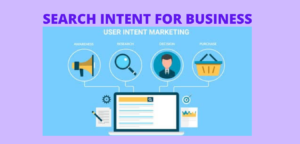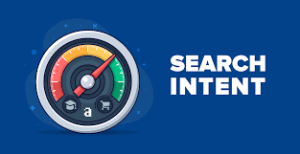by Fredrick Musungu
When it comes to marketing to sell products and services online; both the quality and quantity of your traffic carry weight, and should be given much consideration.
So you’ve just finished writing your draft article. Would you love to rank it high in search engines like Google and Bing to attract readers, and convert them to customers?
Learn to write content that is in line with the reader’s search intent.
Emphasizing how crucial the idea of search intent is to SEO is hard. Not that I’m blowing It out of proportion when I say that if you potentially want to rank where other brands are dominant; understanding and writing content with the search intent in mind is important.
You can significantly improve your ranking and consequently increase your website’s traffic by just utilizing the search intent.
How do you do this? Let’s dive in.
In this post, I’ll share with you my preferred underutilized secret, that truly drives traffic.
Just briefly, this is what you’ll learn:
- What is the search intent in SEO?
- Types of search intent in SEO
- How to determine search intent
- Why is search intent crucial to SEO?
- How to optimize for search intent
What is the search intent in SEO?
Simply put, the search intent is the reason behind a particular search query. Or in other words, why is the person searching? Are they looking for a particular website? Are they looking for something to buy? Do they want to learn about a thing?
To help you understand this better, take a few minutes and comb through your search history. Then, extract a few of your recent searches.
From the searches you extracted, try to figure out what you were looking for. Well, your answer was your search intent then.
Types of search intent
Here are the four essential types of search intent:
Informational intent.
This is when the searcher needs information. It might be an answer to a question like “what is liberating freelance?.” or a thing that requires clarification like ” where to sell articles”. However, not all informational searches are formed as above. They may also take the forms below:
- ” Wilson airport direction”
- ” Sunday church services”
- ” Email service provider “
Transactional intent.
This is when the searcher needs to buy. They might already know what they need to purchase, but they don’t know where to find it. They take the forms below:
- “Cheap Samsung J1 Mini”
- “Buy a safe family car”
- “Sony systems prices”
- “export photos and videos from google photos“
Commercial investigation intent.
This is when the searcher needs a particular service or product but is yet to decide on which is the ideal one for them. Most likely, they’re in search of either reviews or comparisons. They take the forms below:
- ” Best laptops “
- ” Top restaurant “
- ” Electrician near me “
Navigational intent.
This is when the searcher needs a particular site. They might already know the site they want to visit but may not be sure of the URL. They take the forms below:
- ” Huffington Post sign up “
- ” HostFiti sign in “
Why is search intent crucial for SEO?
The most popular search engine Google aims at offering users the most relevant outcomes for their queries.
For those who don’t know, the success of Google as a business depends on its above aim. To understand exactly what transpires when a search engine’s outcomes are irrelevant, you just have to look at Google’s competitors. Very few people use them and as a result, they make less cash from Ads.
If you would like to rank high in search engines, you need to strive for being the most relevant result for the query. How? By writing content that is in line with the search intent.
How to determine search intent.
Search intent is always obvious, you just have to look at how the query is structured.
For example, if the query is “Huntington Post” then definitely the searcher needs information (informational intent). And if the query is “Huntington post sign up” then definitely the searcher needs a particular site(navigational intent).
How to optimize for search intent.
Search intent should determine the type of content you write. If the keyword has an informational intent, write a blog post. And if the keyword has a transactional intent, write a product page. Do you get the logic? To truly optimize for search intent, you have to delve deeper and study the SERPs in much detail.
Here’s how to do it step by step:
Step one: Check SERP’s reliability.
Google rankings aren’t constant, they fluctuate with time. If slight or no change Is seen for the then high-ranking pages over time, these are the ideal keywords to target because their search intent is clear. If fluctuations are seen for some pages but not others, these too can be ideal keywords. Just ensure the content aligns with the popular intent behind the query.
Step two: Ensure that your content is in line with the 3Cs If search intent.
Now that you know your selected keyword is ideal, your next step is to study the search outcomes for the 3Cs. Which are:
- Content-type.
- Content format.
- Content angle.
Here’s more about the 3Cs above for a better understanding.
1. Content-type.
This refers to the general”type” of content in search outcomes and Is always one of the following:
- Blog post.
- Category page.
- Product page.
2. Content format.
This refers to the “format” of the high ranking pages and can be any of the following:
- “How to” guides.
- Step by Step tutorials.
- List posts.
- Comparisons.
- Reviews
- Opinion pieces.
Tip: If most of the high-ranking pages are how-to guides, come up with a how-to guide, if list posts come up with a list post.
3. Content angle.
This refers to what makes the high-ranking posts and pages get noticed. If it’s “Best”, ” Easy”, “Stress-free”, emulate that but don’t copy.
Tip: Visit high-ranking pages and posts for insights. Links to buy, Visuals and Images are vital.
Final Thoughts
That’s it!. The little-known secret I use to scale up both the quality and quantity of website traffic. Search intent is perhaps the better-ranking component for 2021. In the beginning, you were looking forward to knowing how to use search intent to exceptionally drive traffic.
Having covered that, you are just a few steps to ranking high. The best way to prove what you learn has been and is to implement it. So, over to you!
This might not be the only traffic driving secret, but it truly works for me. What are some of the secrets you use to drive traffic? I’d love to hear from you, so please leave a comment.
About the writer
Fredrick Musungu is a freelance writer and copywriter who helps businesses and individuals earn more with promotional and informational content at the Liberating Freelance Blog. And also writes about health at FMHealthwise Blog





2 Comments
Pingback: 5 Best Online Businesses You Can Start In Kenya Today - MPESAPAY.com
Pingback: Get Your First Freelance Writing Gig ( A Proven Strategy For New Writers ) - MPESAPAY.com